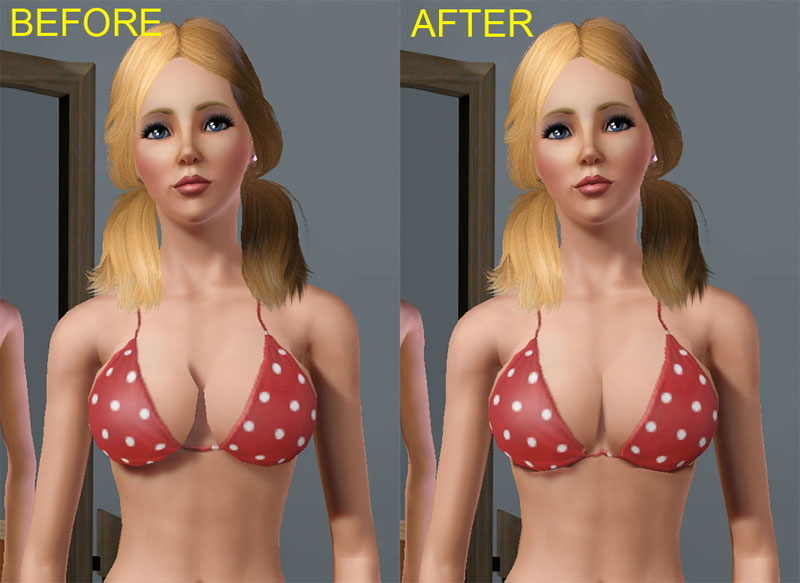

I thought there was a way to unwrap spheres with LithUnwrap, but I can't find anything that talks about it or anything that works when I start pushing buttons and pulling levers. HOWEVER, How in the heck do I deal with the UV map? Instead of nice rows of squares, the map is laid out in concentric circles. After a little scaling I ended up with something that I think will work nicely, even though the poly count is a lot higher than I wanted. Anyway, I made a sphere and rotated it 90 degrees along the Z axis. Well, after getting everything squared away with the skirt (thank you Cmar!, Much care will be taken when messing with mesh materials in the future) I went back to add faces to the breasts for all the reasons pointed out earlier in the thread. Now that the body is out of the way, the rest of the mesh will be a breeze I honestly don't think I could have done the crotch area manually. Just a couple of minutes ago I was able to use the REPLACE VALUES to instantly put the fat body back in place. I've been dissecting a morph that went totally spastic for days, trying to sort the scrambled verts into something almost simlike.


It really is a b**ch on wheels to make layered meshes, but I like them so much more than the more conventional ones. I'll redo the breasts before the top I was just about to start, and make them with a high enough poly count that I can both delete underlying faces and use as clothing layers. The breasts on this mesh simply don't have enough polys to do much with, but I've been meaning to re-work them anyway. THANK YOU! I didn't think of using the body itself as a clothing layer. IMO the best strategy, if possible, is to make a duplicate of the relevant part of the body mesh, expand it slightly and reshape it as necessary, and use that for the clothing layer. You can use transparency to make only the clothing visible in the duplicate. That's why layered meshes are a nightmare in general and particularly in the breast area.

In a bone morph each vertex is 'pulled' by the movement and scaling of the bones it's assigned to by a distance proportional to the weight for that bone.Įven if the bone assignments/weights are well matched, if the verts in the suit don't lie directly over the corresponding verts in the body the combination of morphs is likely to produce clipping. It can be tricky to get them to work together when combined, as you're finding out! And matching the bone assignments means that not only the bones for each vertex but the weights for each bone must match for corresponding verts. The breast slider is a bone morph and dependent only on the bones. The fat/tit/thin sliders are GEOM morphs and dependent only on the morph meshes.


 0 kommentar(er)
0 kommentar(er)
